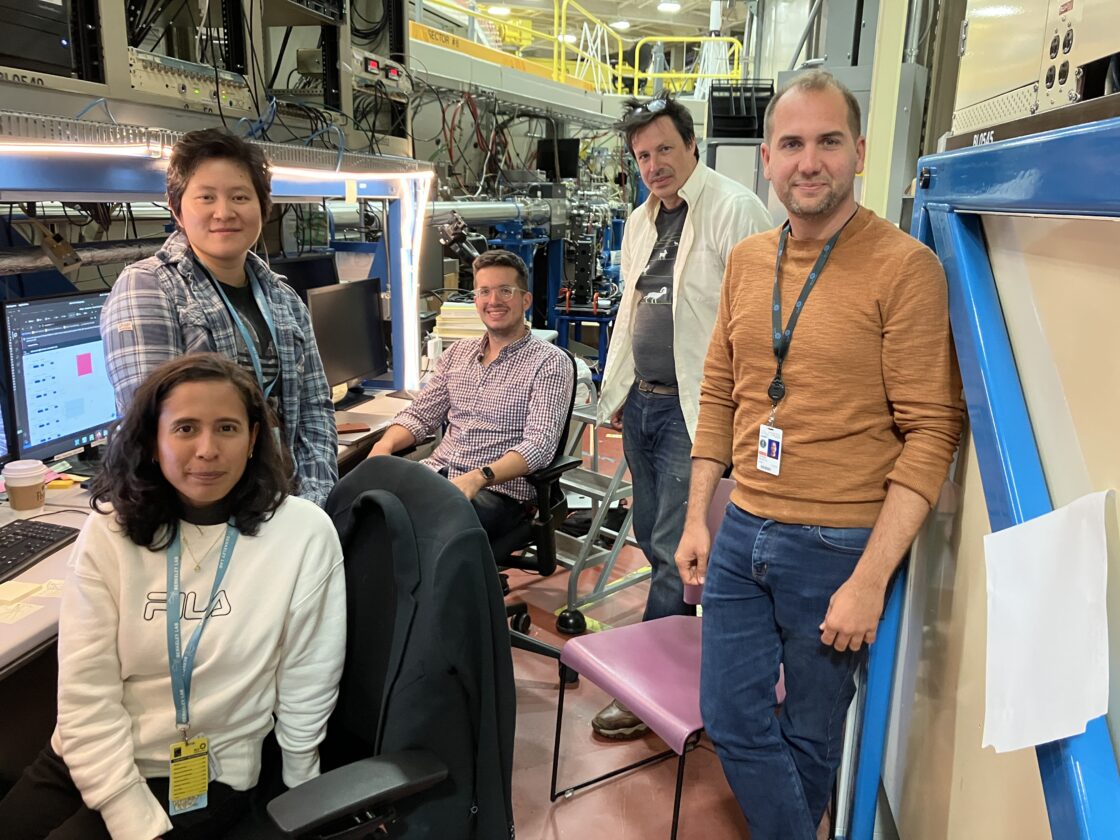Scientists at the Advanced Light Source (ALS) and other Department of Energy–funded light sources are developing autonomous, “self-aligning” beamlines—a revolutionary breakthrough that could significantly enhance research capabilities worldwide.
Like a precision laser pointer that must hit its target perfectly, beamlines require exact alignment to function effectively. Traditionally, this process has been done manually, but with the advent of diffraction-limited light sources, the level of precision to align dozens of degrees of freedom and constraints increases drastically, and an automated procedure is needed to operate beamlines optimally.
Here, a team of researchers used machine-learning algorithms to create a model that captures how changing the parameters of a beamline affects the output beam qualities. At the core of this automation is Bayesian optimization, a mathematical algorithm that acts as the system’s “brain,” controlling motors and sensors to achieve optimal alignment. The ALS beamline controls group in tandem with the ALS computing group upgraded instrument controls on ALS Beamline 5.3.1 to the modern EPICS Bluesky framework, which enabled the implementation of an automated “fly-by-wire” system that allows beamlines to align themselves, similar to how modern aircraft use computer controls for flight adjustments.
Four different optimization scenarios were tested: a beamline at the National Synchrotron Light Source II, ALS Beamline 5.3.1, an electron beam at Brookhaven National Lab, and a simulated digital twin for benchmarking.
The system performed faster and more reliably than expected. In one case, the automated system achieved better beam alignment in five minutes than manual operation, doubling the beam intensity. This success inspired a vision of standardizing controls across facilities to enable more advanced optimizations. The improved beam control offers refined detail and sensitivity for examining materials, particularly under extreme conditions and for studying advanced magnetic materials.

ALS scientist Antoine Islegen-Wojdyla envisions an ambitious future: “My ultimate goal is to create a system that could automatically shape the beam for each unique sample.” Such a system would function like a self-adjusting microscope, optimizing itself for every specimen.
This technology was in part supported by the Dream Beam DOE Early Career Research award. The team has made their software freely available to other facilities, advancing the goal of fully automated research centers that operate more efficiently and yield superior scientific results.
By enhancing precision and usability, this development marks a pivotal step forward in accelerator science, opening new opportunities to discover and understand the materials shaping our future.

T.W. Morris, M. Rakitin, Y. Du, M. Fedurin, A.C. Giles, D. Leshchev, W.H. Li, B. Romasky, E. Stavitski, A.L. Walter, P. Moeller, B. Nash, and A. Islegen-Wojdyla, “A General Bayesian Algorithm for the Autonomous Alignment of Beamlines,” Journal of Synchrotron Radiation 31, 1446 (2024), doi.org/10.1107/S1600577524008993.